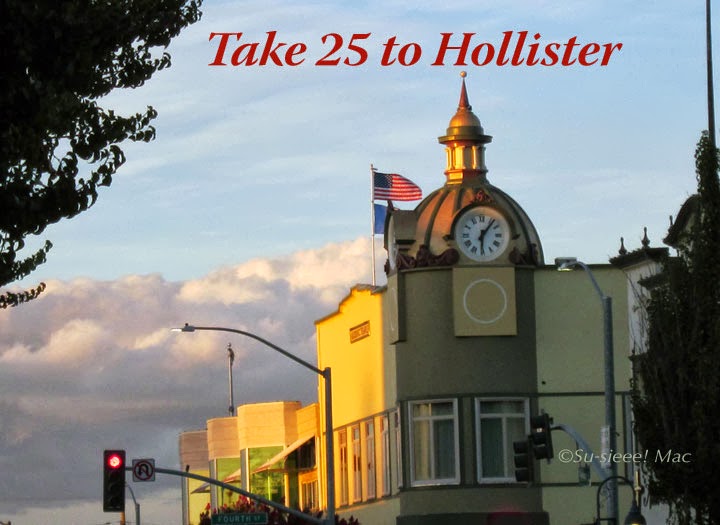Methinks it's time again to say that
Hollister, California, the store, is not the same as
Hollister, California, the city.
Yup.
Abercrombie & Fitch began selling apparel with the Hollister brand in 2000, which is weaved around the fictional beach town of Hollister in Southern California where the made-up Hollister Company is located. Either the fantasy town or company was established in 1922 by an imaginary Dutch East Indies immigrant named John Hollister. The marketing team must've had fun dreaming up the fanciful, fake Hollister, California story.
The real city of Hollister is located in San Benito County, the only landlocked county of the Central Coast region of California, which is about 45 miles east of the Pacific Ocean. The ocean breeze, as well as the fog, comes through the low mountain passes on most days. Thank goodness for that, otherwise the temperatures, especially in the summer, would be unbearably hot.
Hollister was founded in 1868 and, until it incorporated as a city in 1872, the town was part of Monterey County. Two years later, Hollister became the county seat of the newly formed San Benito County.
The main industry in our county is agriculture. It has been from the start and unless all the ranchers and farmers sell their land to housing developers and oil companies, we shall always be an agricultural community. Something for which we, locals, ought to be proud. The number of local farmers and ranchers choosing to follow sustainable and organic farming practices continues to increase, which I think is good for both our health and the environment.
The mascot for our local high school is the Haybaler, also called Baler. Not a machine, but a young farmer. Everyone who goes--and went--to San Benito High School, also known as Hollister High School, is a Haybaler, regardless of whether the person played a sport or not. Once a Haybaler, always a Haybaler.
I don't know about the history of the mascot, but in the late 19th century, our area was known for the quality and quantity of its Hollister Hay. During the summer of 1892, for example, 5,412 tons of hay was shipped from Hollister to Seattle, San Diego, Chicago, New York, and other parts of the United States. In fact, the Lathrop Hay Company, owned by Hollister pioneer resident Levi B. Lathrop, constructed some of the largest hay warehouses in the world back then. Lathrop built the first hay warehouse to have a railroad track running through it and to have railroad track scales. That's rather impressive.
Hey! How did I end up talking about hay?
Today is Mrs. Denise Nesbitt's
ABC Wednesday. I'll be checking out posts featuring the letter
N. Come join me by clicking
here.








































